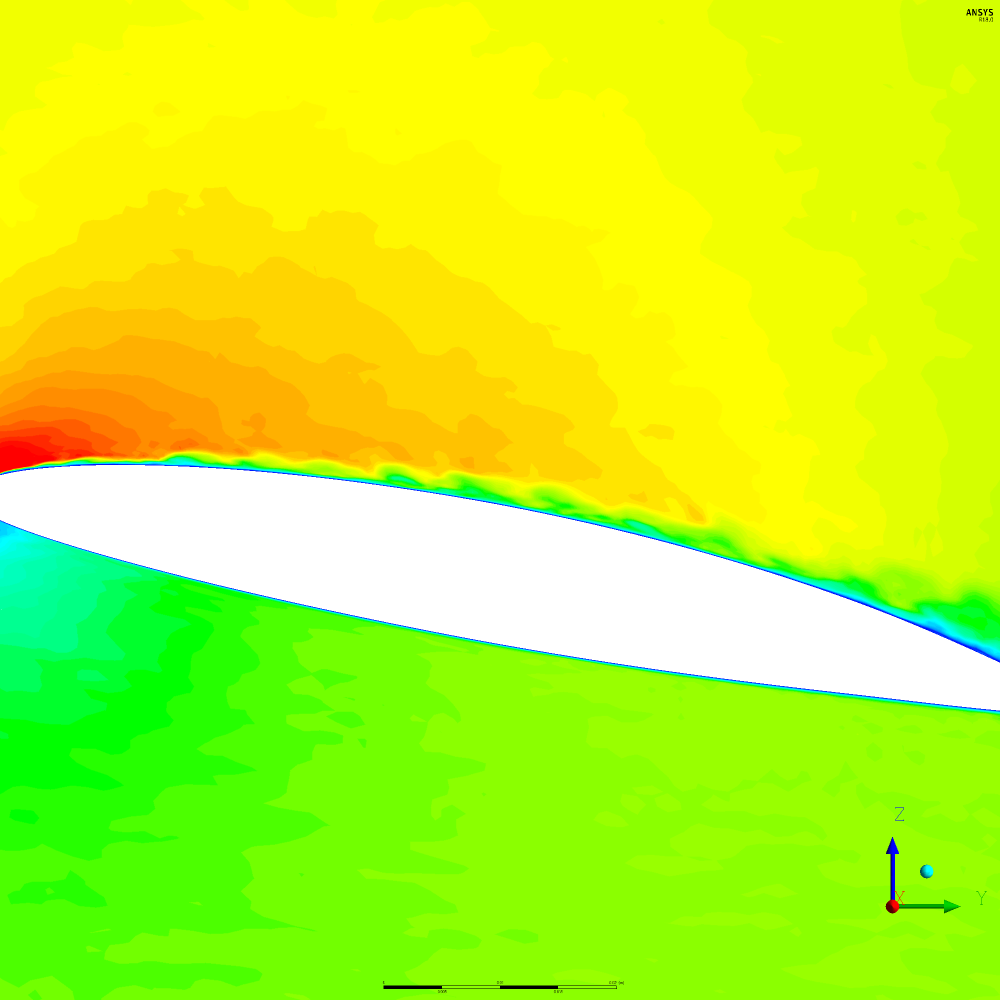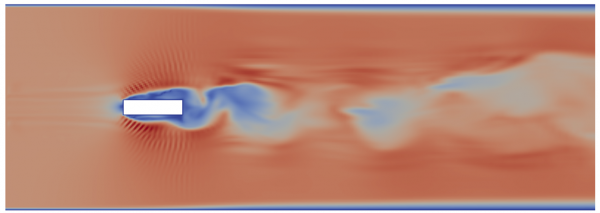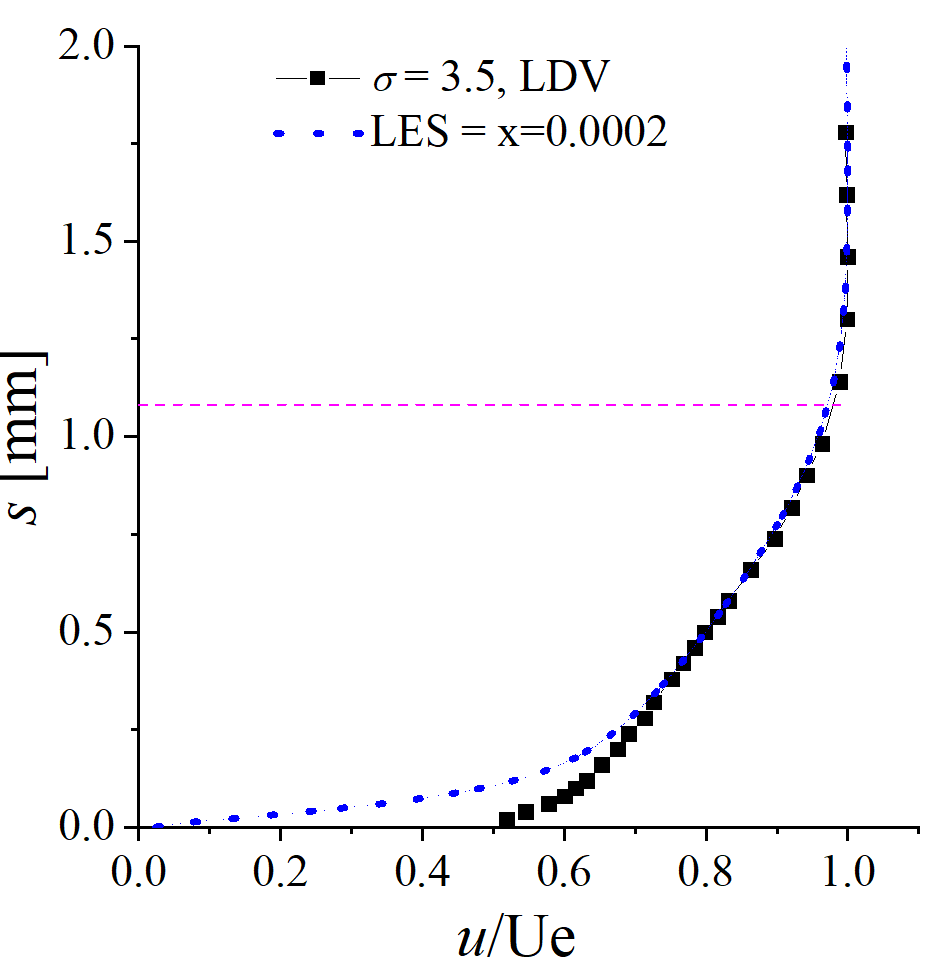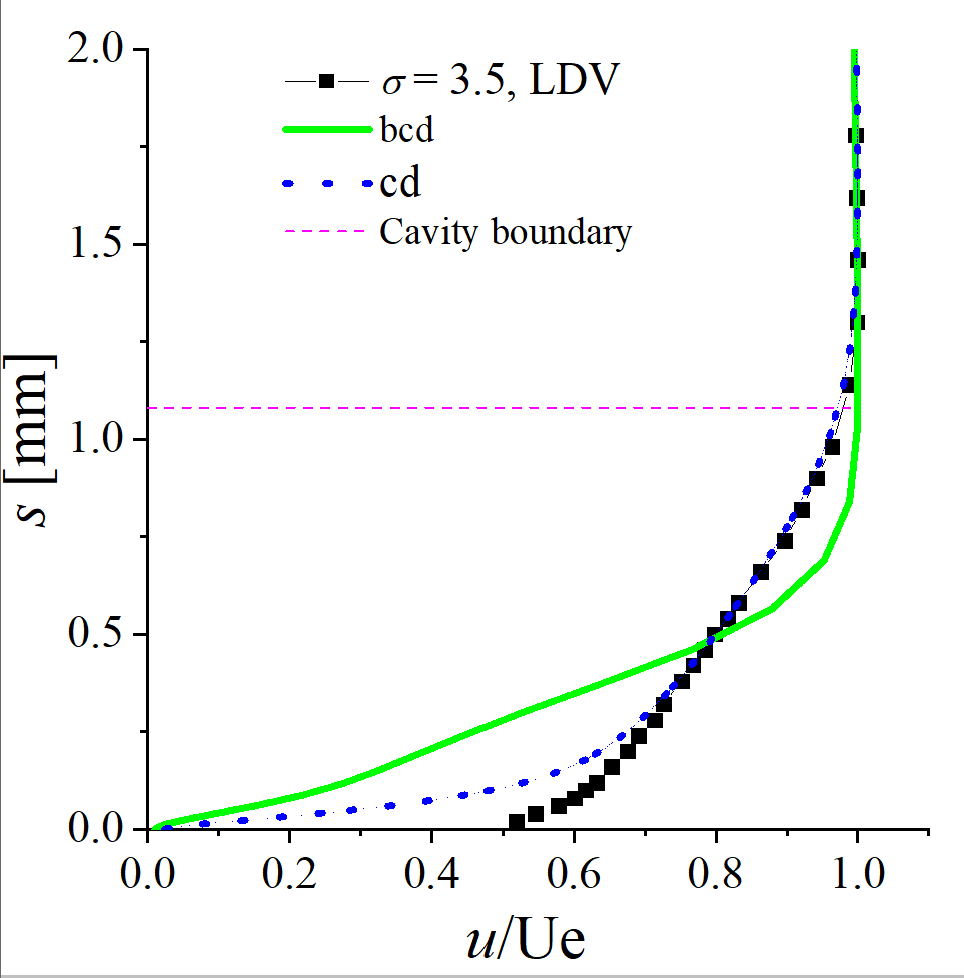fluent用LES算水翼边界层选择中心差分引起的震荡如何消除
-
感谢李老师的及时回复!目前情况是这样
- https://aip.scitation.org/doi/pdf/10.1063/1.5045795 文献引用的文献[23]提到了一种filter,但是并不清楚怎样应用到fluent
- 试过dynamic也会震荡,貌似跟模型无关,因为要算边界层还是主要用WALE
3.目前fluent自带的差分格式包括upwind, 2nd upwind, 3ord MUSCL, quick, bound cd 和cd都试了,只有cd能比较精确的算准边界层的速度剖面和脉动强度,检索到涉及定量分析边界层的文献比如槽道流动,平板流动,绝大多数也是用的中心差分,只是雷诺数都偏低。
震荡并不影响边界层平均速度和脉动与实验的对照,但是瞬时流场会有这样的锯齿形状,所以Q涡显示时会有一些非物理的碎涡出现,怎么都感觉会对后处理有影响。。

-
感谢老铁的建议,我查了查好像没有这种现成的耦合操作,bounded cd可能是最像的,但是经过计算发现在边界层应该是全部切换成迎风格式了,没有部分耦合这种机制。

在国外cfd论坛上找到一个相似的情况,幸运的是那个人好像不关注边界层就改成迎风就没有震荡了,我看有个人的回答也解释了为什么除了中心差分都算不太准边界层。。
The choice of the scheme for LES should be based on the numerical diffusion it introduces. Ideally you should use linear(中心差分), or cubic. You need good and prett uniform mesh anyways for LES, since you are assuming the filter operator and the differential operator are commutative, which is not true on non-uniform grids! The filtered schemes are a last resort scheme in my view, if you can't really do better with your mesh. Upwind and linearUpwind, but also limitedLinear and QUICK should be avoided because they are too dissipative.
可惜就是无法消除震荡
-
李老师,可以先看下0.15弦长处的速度剖面,我是在这个位置插入一根沿z方向4mm线导出平均速度,x=0.0002m, y=-0.059182m, z=0.016964m到0.020964m,根据最大值无量纲化,图表附在文件里。velocity_profile_ldv_test_0.15C.zip
-
抱歉,李老师,那我直接把LDV的数据贴上吧,谢谢老师!
0.51874 0.02 0.54523 0.04 0.57821 0.06 0.60027 0.08 0.61619 0.1 0.63168 0.12 0.65259 0.16 0.67519 0.2 0.69035 0.24 0.71312 0.28 0.72578 0.32 0.75144 0.38 0.76757 0.42 0.78385 0.46 0.79825 0.5 0.81624 0.54 0.83174 0.58 0.86305 0.66 0.89698 0.74 0.9205 0.82 0.94188 0.9 0.96355 0.98 0.98842 1.14 0.99863 1.3 1.00000 1.46 0.99797 1.62 0.99706 1.78
-
- is it time-averaged U predicted by LES?
- What is the maxima? the Umax in this line or in the computational domain?
Your results look quite good. Is it predicted by linear scheme? How about the other schemes, e.g., limited schemes?
I am runing LES simulation, but it is very slow. I try to limit Co under 0.6. Since the global Umax is around 10 m/s, it indicates $\Delta t = 2.6e-6$. What value is your global Umax?
Courant Number mean: 0.00518159 max: 0.59921 deltaT = 2.67779e-06 Time = 0.0168822 GAMG: Solving for p, Initial residual = 0.0474207, Final residual = 0.00156874, No Iterations 2 time step continuity errors : sum local = 3.90116e-10, global = -6.12223e-14, cumulative = 5.73243e-11 DICPCG: Solving for p, Initial residual = 0.0105353, Final residual = 9.99036e-07, No Iterations 608 time step continuity errors : sum local = 2.48515e-13, global = -3.59741e-15, cumulative = 5.73207e-11 ExecutionTime = 401.48 s ClockTime = 421 s fieldMinMax minMaxp write: min/max(mag(U)) = 0 10.5464 Courant Number mean: 0.0051816 max: 0.601813 deltaT = 2.61829e-06 Time = 0.0168848 GAMG: Solving for p, Initial residual = 0.0479045, Final residual = 0.00156265, No Iterations 2 time step continuity errors : sum local = 3.72593e-10, global = 2.37179e-14, cumulative = 5.73444e-11 DICPCG: Solving for p, Initial residual = 0.0102726, Final residual = 9.97099e-07, No Iterations 152 time step continuity errors : sum local = 2.38352e-13, global = 2.12724e-14, cumulative = 5.73657e-11 ExecutionTime = 402.54 s ClockTime = 423 s





 您有时间的话可以试试foam的中心差分格式,我用CFX和fluent都会有震荡。这是约450万的网格文件:
您有时间的话可以试试foam的中心差分格式,我用CFX和fluent都会有震荡。这是约450万的网格文件: